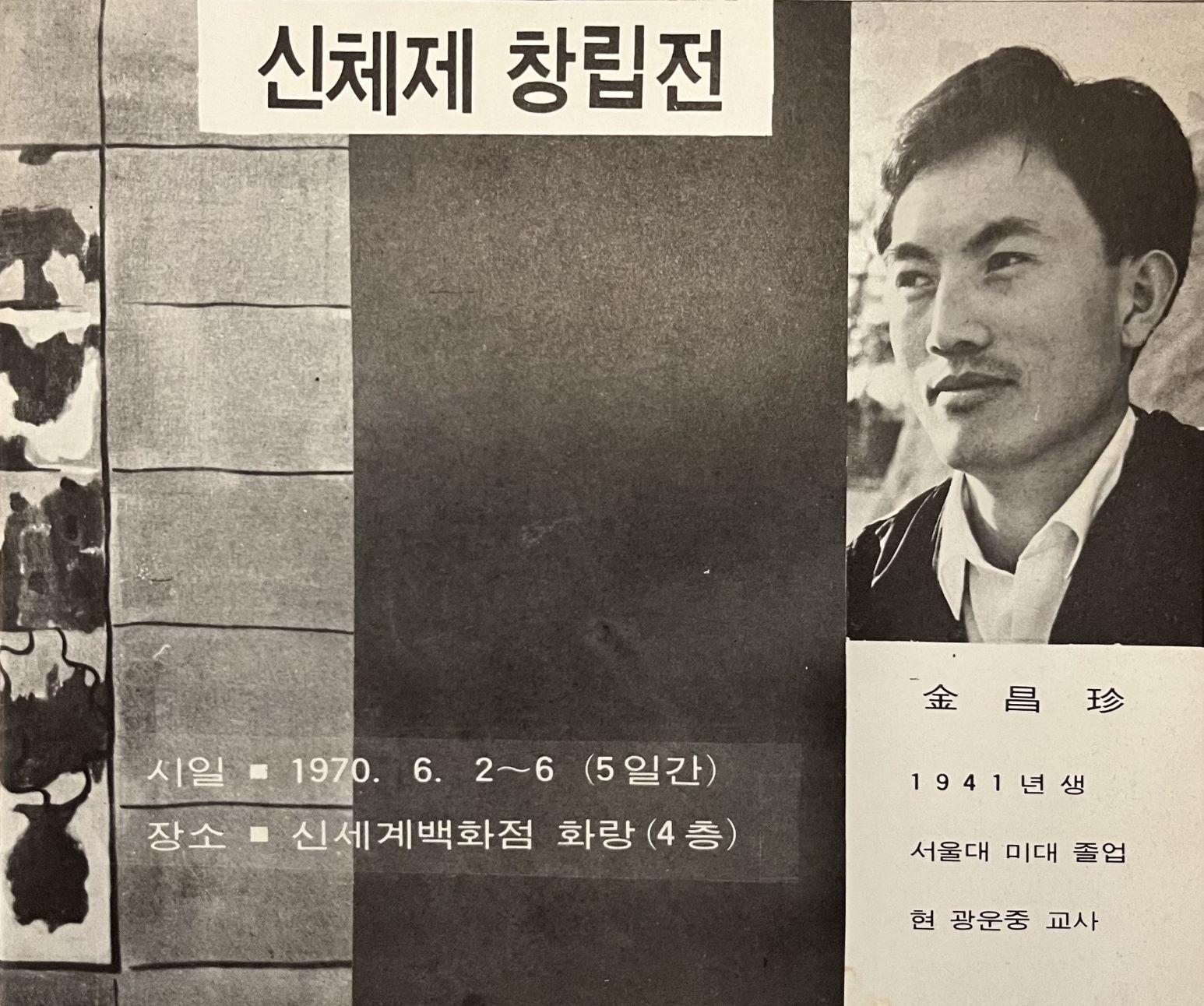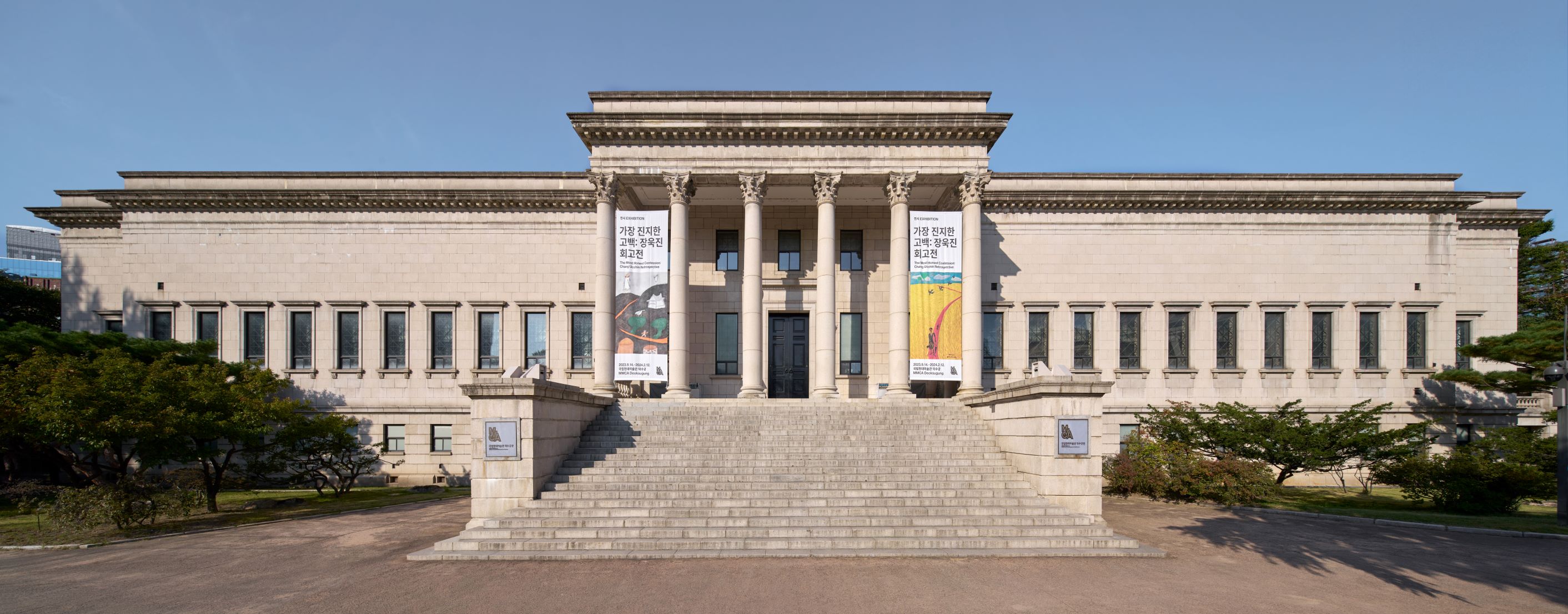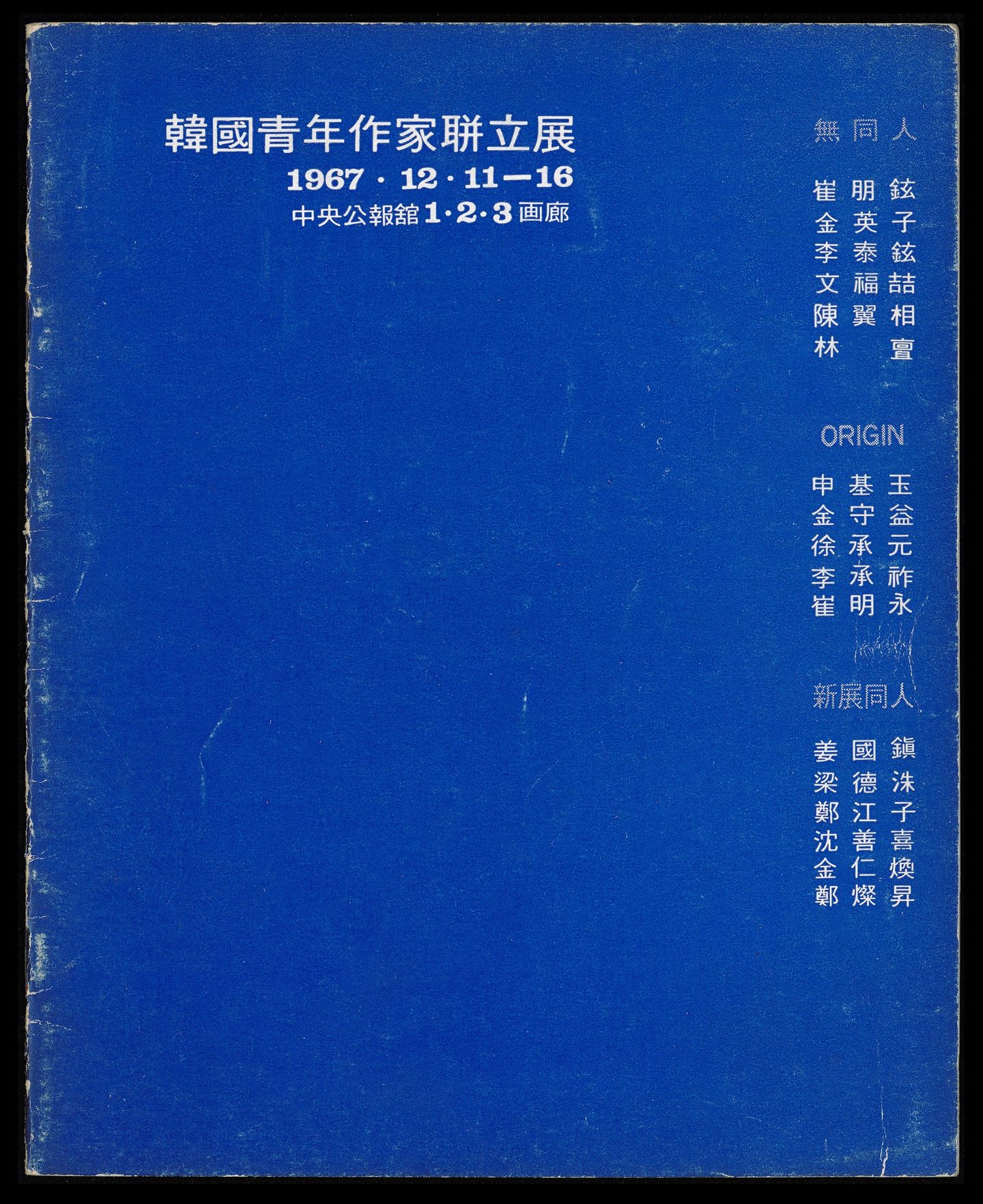
Korean Information Service Gallery, Image provided by National Archives of Korea
Korean Information Service Gallery
* Source: Multilingual Glossary of Korean Art. Korea Arts Management Service
Related
-

Mook Lim-Hoe
A Korean art group founded in 1960 by several alumni of the Seoul National University College of Fine Arts. The group was active until 1964. The name of the group derives from the Korean pronunciation of Molin, the frequent professional and literary soubriquet of the Ming Dynasty art collector Xiang Yuanbian. The group is noteworthy for its experimentation with abstract and semi-abstract works in the classical literati style of colored ink paintings.
-

Sincheje
Sincheje is a group formed in 1970 by Western-style painters who graduated from the College of Fine Arts at Seoul National University. Its founding members were Kim Changjin, Yun Geoncheol, Lee Kangso, and Jeon Changun. They held an exhibition in celebration of the establishment of Sincheje at Shinsegae Gallery from June 2 through 6 in 1970. Sincheje was composed of young artists who pursued visual art concepts after abstraction, and most of them created works inclined toward geometric abstraction or Optical Art. Among the artists who joined Sincheje other than its founding members were Kang Hwajin, Kwun Suncheol, Kim Jungheun, Park Hakbae, Park Hangryul, Park Heeja, Park Sunam, An Boseon, Oh Sufan, Chong Jaekyoo, Jo Yonggak, Choi Sangchul, and Ha Dongchul. Due to the collapse of a common ideology and the departure of its members, Sincheje was dissolved with its eleventh exhibition held at the Korea Culture and Arts Foundation Art Center from July 10 through 16 in 1976 as the last exhibition. Sincheje is considered to have contributed to the opening of the art scene in the 1970s, along with the ST and Esprit, which were founded to establish contemporary art departing from the overheated Art Informel style of the 1960s.
-

Deoksugung Museum of Art
A term that refers to two separate art museums that have existed in the grounds of Deoksugung palace at different times. First, the Yi Royal Family Museum, which was built in 1938 and renamed the Deoksugung Museum of Art after independence in 1948. This iteration of the Museum was merged with the National Museum of Korea in 1969. Separately, in 1998 a branch of the National Museum of Contemporary Art, Korea (now MMCA) was established at this location, and also named the Deoksugung Museum of Art. In 2013, the official name of the branch was changed to the National Museum of Modern and Contemporary Art, Deoksugung but some people still use the previous name, Deoksugung Museum of Art.
Find More
-

Origin Fine Arts Association
The Origin Society was an art group founded by abstract artists who studied at Hongik University, including Kwon Youngwoo, Kim Sooik, Kim Taekhwa, Suh Seungwon, Shin Kiock, Lee Sangrak, Lee Seungjio, and Choi Myoungyoung. Criticizing the critically dominant Art Informel movement in Korea, the group attempted to explore the use of geometric forms as the fundamental basis for their art, and claimed that only their work represented the true avant-garde tradition. They held their first exhibition at the Korean Information Service Gallery in September 1963. Geometrical abstraction remained the distinctive feature of the group until its tenth exhibition in 1974, however, due to disagreements about the conceptual orientation of the group, the Origin Society was disbanded and re-established with a new name Origin II in 1975. By the late 1970s Dansaekhwa paintings were the dominant style of the group.
-

Esprit
An organization formed in 1972 by five alumni and four students of sculpture at the Hongik University Department of Western Art. The organization advocated the production of avant-garde art. In the preface to the inaugural exhibition, the group stated that the “acceptance of the given universe as is, has become a meaningless act.” The group also stated that it had created a joint space for activity, in recognition of the fact that nothing exists to support life without open creative work toward a new world. In 1972, the group held its inaugural exhibition at the Korean Information Service Gallery.
-

Union Exhibition of Korean Young Artists
The Union Exhibition of Korean Young Artists was an art show that members from Origin Fine Arts Association, Zero Group, and Sinjeon Group organized to be held at the Korean Information Service Gallery from December 11 to 17, 1967. By choosing to present works in what were the mainstream genres in Western art, such as pop art, op art, environmental art, happenings, and sculpture, the Exhibition helped to usher in a new era for Korean art after the dominance of the Informel group. Members from the three groups were mostly graduates from Hongik University. The manifesto they released stated: “Informel didn’t provide anything for last ten years. We are artists as activists who aim to create art after abstraction, art in everyday life, and public-friendly art.” This manifesto clearly expressed a desire to challenge the art world establishment, and the Coalition Exhibition is often considered as the beginning of a period of Korean “Experimental art (silheom misul),” which existed from the end of the 1960s to 1970s.






